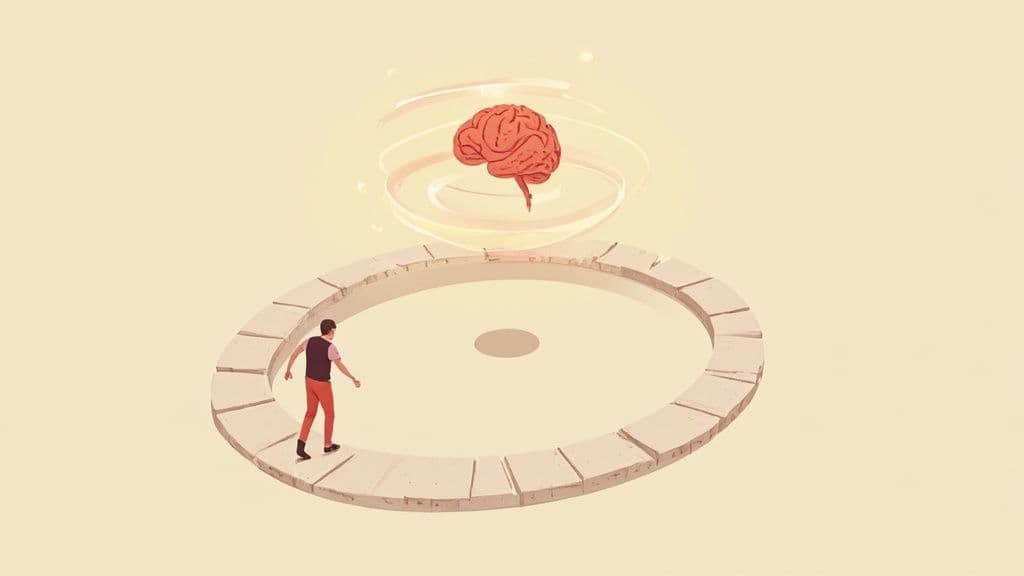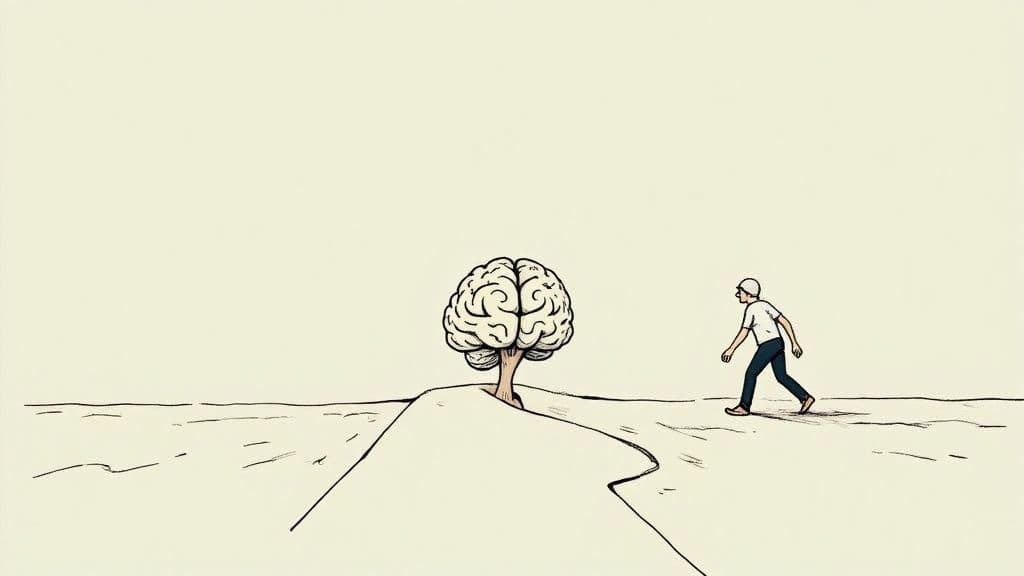Tired of asking “Why do I keep making the same mistakes?” You’re not alone. This article explains the psychology and brain science behind recurring patterns and gives simple, actionable steps to interrupt the loop and build healthier responses.
November 4, 2025 (21d ago) — last updated November 9, 2025 (16d ago)
Stop Repeating Mistakes: How to Break the Cycle
Discover why you repeat mistakes, the brain science behind habits, and simple steps to break the cycle and build better responses.
← Back to blog
Stop Repeating Mistakes: How to Break the Cycle
Summary: Learn the brain science and practical steps to stop repeating mistakes, build new habits, and move forward with clarity.
Introduction
Tired of asking “Why do I keep making the same mistakes?” You’re not alone. This article explains the psychology and brain science behind recurring patterns and offers clear, practical steps to interrupt the loop and build healthier responses.
We’ve all been there
That gut-wrenching moment when you realize you’ve fallen into the same trap again—whether in relationships, work, or daily habits—is one of the most frustrating human experiences.
It isn’t just about willpower. The brain favors familiar routes to save energy, and repeated behaviors carve neural pathways that make old responses automatic. Until you deliberately practice a new response, the default tends to win.
What this article covers
- How habits form in the brain and why automatic responses persist
- Common cognitive shortcuts that reinforce repeating mistakes
- Practical steps you can use immediately to interrupt the loop
- A life-path perspective to reframe recurring lessons
By the end, you’ll see recurring mistakes not as failures but as actionable signals pointing to specific lessons—and you’ll have simple tools to start changing course.
How your brain is wired to repeat errors

The brain forms habits by strengthening pathways each time a behavior repeats. Over time, the action becomes the default response—like a well-worn path in a field that’s easier to follow than the grass beside it.
When control of a repeated action shifts from conscious decision-making to automatic systems, interrupting the behavior takes deliberate effort and practice. New responses must be repeated until they form their own easier path3.
Cognitive shortcuts and bias
The brain uses shortcuts to reduce decision load. Those shortcuts help, but they can also lock us into repeating mistakes. Common traps include:
- Confirmation bias: noticing evidence that supports what you already believe, which reinforces old patterns.
- Sunk cost fallacy: continuing a course of action because you’ve already invested time or emotion in it.
- Emotional reasoning: treating feelings as facts and letting them drive choices.
Recognizing these traps is the first step toward reclaimed choice.
How past actions shape present choices
In uncertain moments, your brain often defaults to past responses because they’re familiar. Repeated actions reinforce the belief that “this is how I respond,” and that belief becomes a self-fulfilling loop. Research shows past behavior strongly influences future choices through memory and feedback loops1.
Becoming the architect of your future
Breaking a pattern starts with awareness without harsh self-judgment. A simple starter plan:
- Identify one recurring pattern to change.
- Notice the trigger: situation, feeling, or thought that sparks the behavior.
- Choose a single, small alternative action to try when the trigger appears.
Each time you opt for the new response, you lay the first bricks of a new default.
Why learning from mistakes takes time
The brain’s error-detection and learning systems continue developing into young adulthood, which helps explain why some patterns persist during adolescence. The brain’s rapid error signal supports self-correction but strengthens gradually with age2.
Mindful practices—pausing after a mistake, talking it through, or keeping a nonjudgmental mistake journal—can amplify your internal error signal and speed deliberate learning.
Finding meaning: life path and deeper self-awareness
Recurring mistakes can feel random, but reframing them as lessons tied to deeper life themes can help. Viewing repeating patterns as targeted lessons—such as trust, responsibility, or boundaries—reduces shame and gives direction for focused practice.
A life-path perspective is about context rather than fate: it helps you name the lesson so you can practice specific changes with purpose.
How to apply a life-path perspective
- Identify core challenges you face repeatedly.
- Reframe mistakes as part of a curriculum offering the same lesson until you learn it.
- Pair that insight with small, practical actions (mindfulness, tiny habit swaps, accountability).
Combining psychological insight with a broader life-context helps you stay motivated when change feels slow.
Practical steps to interrupt the loop
- Pause and breathe when you notice the trigger.
- Name the pattern out loud: “This is the old pattern.” Naming moves it into conscious awareness.
- Replace the behavior with a tiny, concrete alternative action.
- Track progress in a nonjudgmental journal to spot trends and triggers.
- Seek community or accountability—small consistent changes compound over time.
Research on habit formation shows new behaviors require consistent repetition before they become automatic; the time varies by person and action, but repeated small wins are the reliable path forward3.
Common concerns
I know it’s a bad habit. Why is it still so hard to stop?
Habits are neurological shortcuts. Once pathways form, your brain prefers the easy route. To change that default you must repeatedly choose a new response until a new pathway becomes easier than the old one.
How long will it take to stop repeating the same mistake?
There’s no fixed timeline. Habit change depends on how ingrained the pattern is and how consistently you practice the new response. Focus on small, repeatable actions rather than speed.
When should I seek help?
If patterns cause serious harm or you can’t implement small changes alone, consider a therapist, coach, or supportive community.
Quick Q&A — Common concerns (concise)
Q: What causes repeated mistakes?
A: The brain’s efficiency systems—habit pathways and cognitive shortcuts—make familiar responses automatic, especially under stress. Awareness interrupts autopilot.
Q: What practical first steps work best?
A: Pick one pattern, identify the trigger, choose a tiny alternative action, and repeat it consistently while tracking progress.
Q: Can reframing with a life-path help?
A: Yes. Reframing mistakes as specific lessons reduces shame and helps sustain intentional practice.
3 Concise Q&A summaries
Q1: Why do I keep repeating the same mistake?
A1: Repetition builds neural pathways and cognitive shortcuts that make old responses automatic. To change, interrupt the trigger and practice a new tiny response.
Q2: What’s the fastest way to start changing?
A2: Choose one pattern, identify its trigger, and replace the old behavior with a single, tiny alternative each time the trigger appears.
Q3: When is professional help needed?
A3: If patterns cause serious harm, interfere with functioning, or you can’t make progress alone, seek a therapist or coach.

Discover Your Life Purpose Today!
Unlock your true potential and find your life’s purpose.
